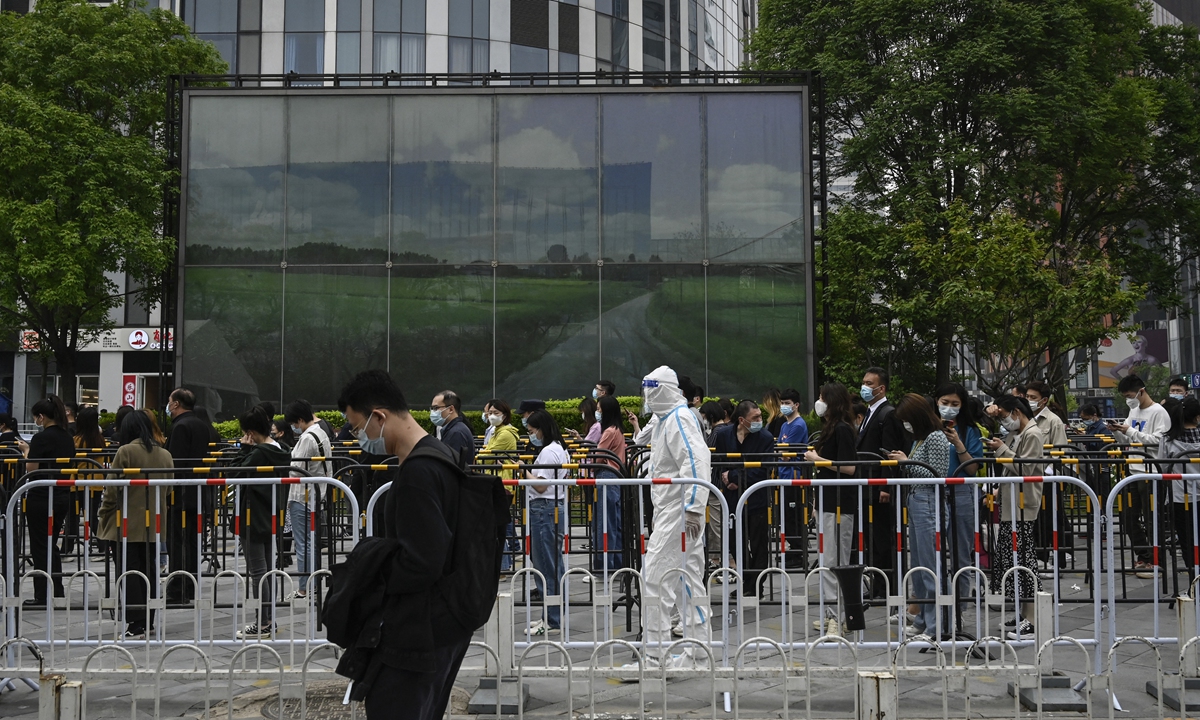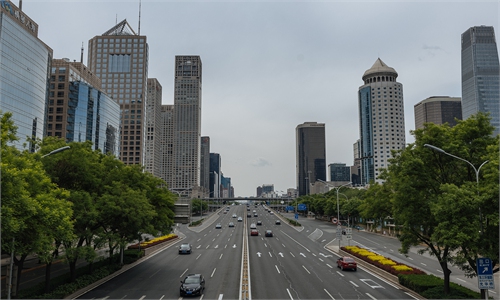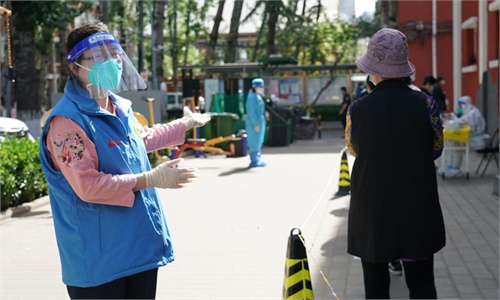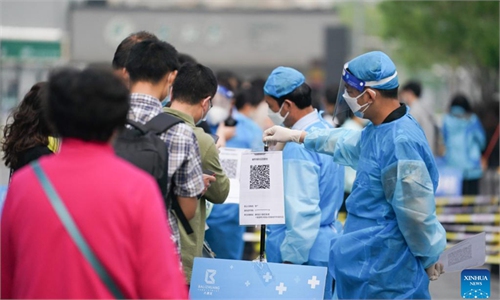Beijing’s Fangshan district imposes stay-at-home order, suspends bus, subway, car hailing services as cluster infections emerge

People wait in line to be tested for COVID-19 at a swab collection site in Beijing on April 25, 2022. Photo: AFP
Beijing's Fangshan district, home to 1.3 million people, will strictly implement work-from-home measures for all local residents, suspending all bus, subway and car hailing services, after health officials uncovered at least eight cluster infections related to a bank, a railway construction company, a bus station and restaurants in the city that has added to the uncertainty of the already complex epidemic situation.
Beijing reported 40 new infections in the past 24 hours, including three detected during mass community level nucleic acid testing. Since April 22, a total of 1,015 COVID-19 patients have been received by designated hospitals in the capital, Xu Hejian, spokesperson for the Beijing Municipal Government, said at Saturday's press conference.
A cluster infection related to an express company's Fangshan branch was immediately red flagged, as 16 cases have already been found. The risk level of the area where the company is located has been upgraded to high risk for contracting COVID-19.
Responding to the case, Beijing authorities asked relevant departments to strengthen anti-epidemic management for couriers, decoration workers, security guards, cleaners, and other mobile groups, meanwhile lowering the density of population living in collective housing.
Fangshan vowed to take the "most stringent and decisive measures" to curb virus spread and prevent spillovers. All people in sealed-off regions in the district will be restricted from going outside, with sensors placed on doors of households. Nucleic acid and antigen sampling will be given once a day to the doors.
Apart from the cluster infection at the courier service station, three new cases were reported at a data center in Shunyi district of the Beijing Rural Commercial Bank, making the total related infection number related to the bank to 37, including 26 staffers.
At the press conference, officials announced the accountability for the cluster infection of the bank, saying that there remained loopholes in work-from-home arrangements, the employee arrival rate and workstation layout.
For example, on May 4, Shunyi district issued a notice to all enterprises in the area, requiring that the attendance rate of all enterprises should not exceed 50 percent. But From May 5th to May 7th, the arrival rates of the company were 69 percent, 74 percent and 76 percent respectively, all exceeding the 50 percent benchmark.
A bureau under the China Railway Construction Corporation (CRCC) in Beijing reported eight new cases, all of whom were management and control personnel, taking the number of related infections to 49 and covering four districts in Beijing.
Qian Guilin, deputy secretary of the disciplinary department with the CRCC said at the press conference that "it shows the bureau has loopholes in epidemic prevention and control measures taken, and brings negative impact on capital's epidemic preventions."
Six officials from the 11th bureau of CRCC were held accountable for the cluster infections, including the board chairman, vice general manager, and leader of the epidemic prevention and control team.



